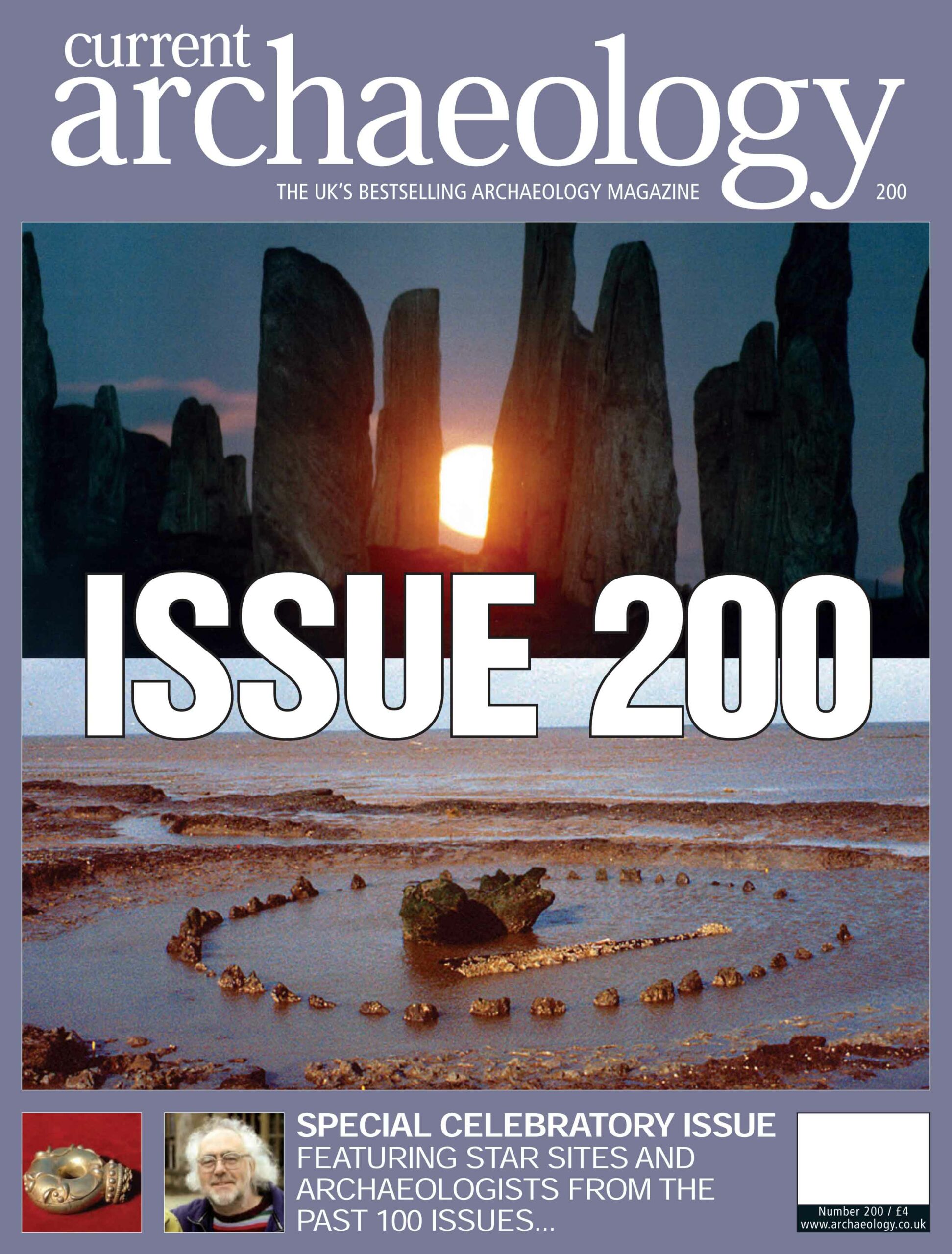Somewhat to our surprise, Current Archaeology has now reached its 200th issue, so it is time for a gala special. In our 100th issue, in 1984, we went into colour and looked at some of the achievements of the leading archaeologists. In this issue, we look back at some of the highlights of British archaeology in our second century, that is between Current Archaeology issue 100 and today.
Our mission in Current Archaeology is always to spread archaeology to a wider audience, and what we do for a dedicated audience, television does on a much larger scale – notably with the great success of Time Team. We begin, therefore, by interviewing Mick Aston, its ebullient leader, and ask him the secret of Time Team’s success.
But what have been the main flavours of Current Archaeology in our second hundred issues? We go through, period by period, picking out some of the most significant findings. Interspersed with these period pieces, some of the notable practitioners of archaeology over our last 100 issues have contributed their key achievements.
We begin with Prehistory, from Boxgrove Man down to Iron Age chariots, followed by Philip Dixon’s reflections on the 35 years he spent excavating at Crickley Hill.
Then comes Roman Britain, followed by the highlights of three major projects. At Silchester, Professor Mike Fulford has been excavating first the town walls, then the amphitheatre, then the Basilica and now an insula in the suburbs. Then on Hadrian’s Wall, two forts have been excavated as part of the regeneration project at South Shields (Arbeia) and Wallsend (Segedunum). And then for a Roman villa, we travel to Piddington in Northamptonshire, where Roy and Diana Friendship-Taylor have just completed their 27th season.
Following on chronologically, we come to the Anglo-Saxons with two major royal burials, the problem of the origins of towns, and questions on the meaning of ‘minster’ churches. And then onto the Middle Ages with towns and their suburbs, moated manors and prebendal manors. There follows a look at the granddaddy of all deserted medieval villages, Wharram Percy.
Finally we ask the question, is it worthwhile to do archaeology in the early modern period? We seek an answer in the Outer Hebrides, and new light on the Highland clearances.
For our final round-up of the archaeology of our second century, we return to distinguished archaeologists that we featured at the end of our first century. We ask them how archaeology has been progressing. Is it still fun? Has the second part of their career been as productive as the first? And here we have the answers from Peter Addyman, Professor Martin Biddle, Professor Lord Colin Renfrew, and Geoffrey Wainwright.
Andrew Selkirk

